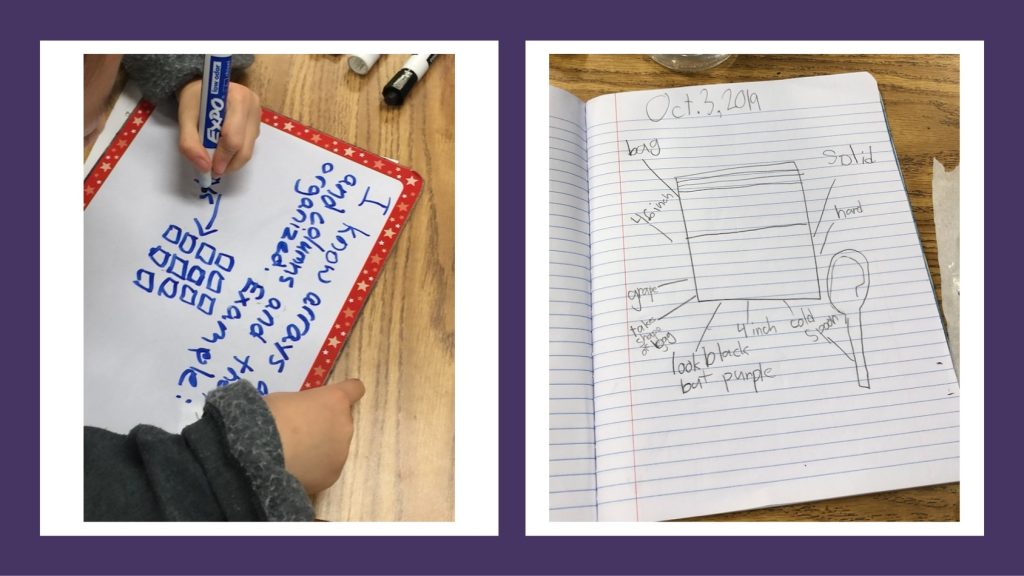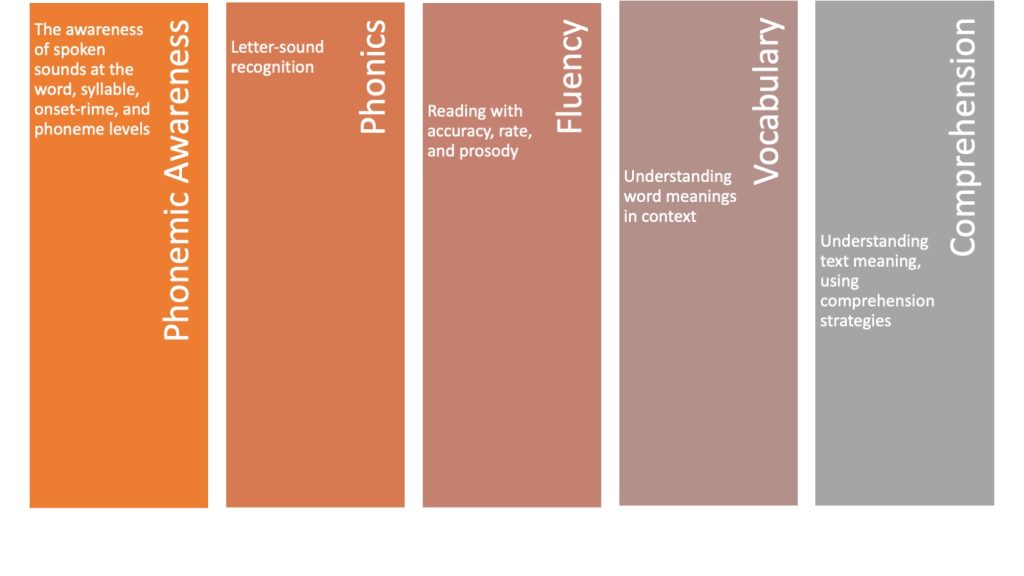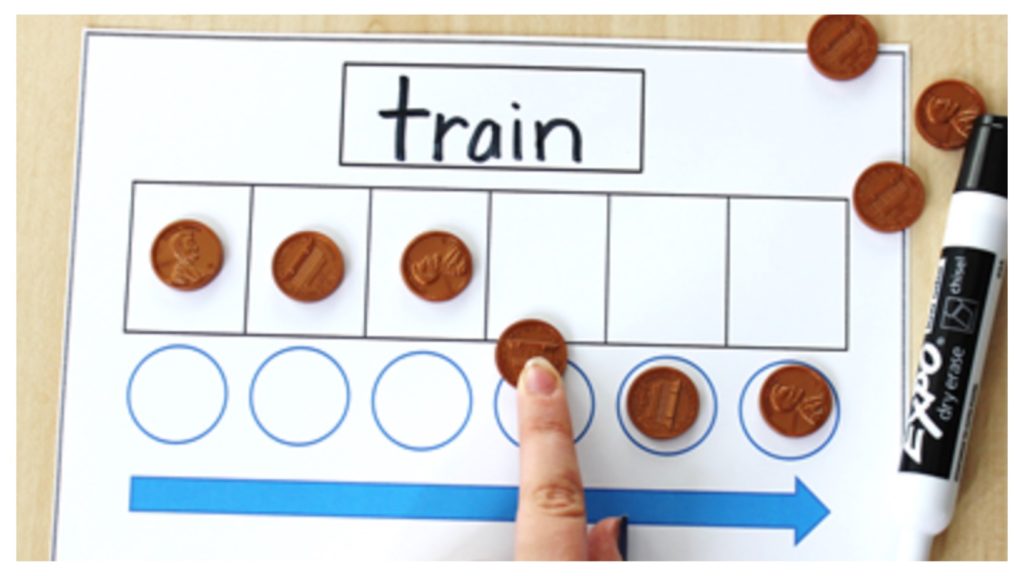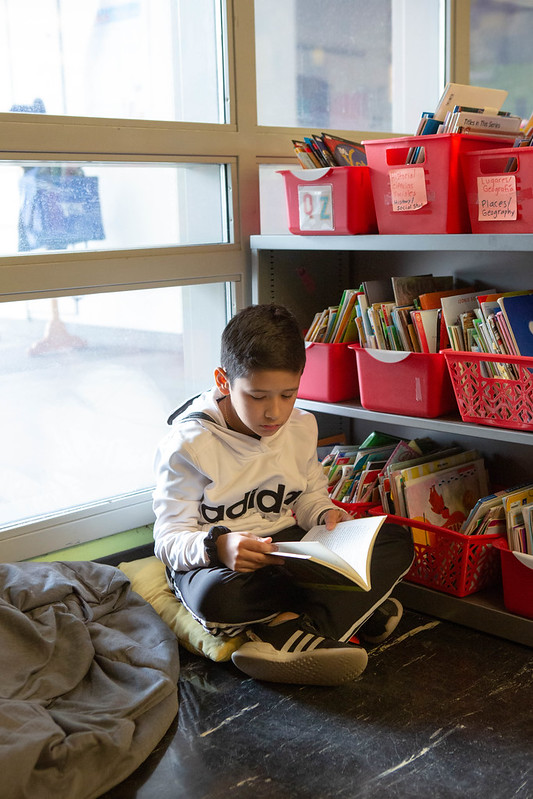Chapter 12: Considerations in the Content Areas
Sandra Kelish

Ms. Kirby was preparing for her second teaching observation during her full-time student teaching internship. She looked over the evaluation tool and stopped at one item that she wasn’t sure about: “InTASC 4. Content Knowledge. The candidate understands the central concepts, tools of inquiry, and structures of the discipline(s) he or she teaches and creates learning experiences that make these aspects accessible and meaningful for learners to ensure content mastery connecting instruction to authentic global and local issues.” She had heard about authentic tasks and materials, and she knew what global and local issues were. But what about tools of inquiry and structures of the discipline?
No matter the content or age group, every discipline has a structure of interrelated concepts, specific modes of inquiry, and considerations. Acknowledging these considerations will support students’ metacognition, activate working memory, and open the learner’s retrieval system. Another component of the discipline structure is the teacher’s deep understanding of not only content, but also how to teach certain content areas. Lesson and unit design involves a three-pronged approach: deep content knowledge, effective instructional practices or protocols, and knowledge of how people learn a particular discipline. The following sections review specific content areas and aligned instructional approaches. This chapter will take the content of the previous chapters in this text and connect it to the structures of the various content areas, such as selecting specific instructional protocols or practices.
Effective methods of instruction cut across content areas. Before we can teach a particular content area well, we must know how to teach well. That said, any effective instructional method must be adjusted to fit a particular content area. As a result, a journal activity that asks students to reflect on their learning may have a different purpose or structure when used in varied disciplines. Table 12.1 includes examples of how journals may be used in different situations.
Table 12.1: Examples of Journals in Different Disciplines
| Content Area | Tasks | Purpose/Goals |
| English/Language Arts | Students respond to a prompt that asks them to consider how their lives are similar to or different from what they have read in a whole class or small-group novel | Connecting one’s own experience to the content |
| Mathematics | Students solve an equation and show two different methods to solve it, annotating these with thoughts about which one they are more likely to use and why | Explaining and modeling how problems are solved |
| Science | Students sketch the growth of the plants they planted from seed and list hypotheses about the reasons for this growth (or lack thereof!) | Observing changing situations using scientific language |
| History | Students take on the role of a historical figure to describe their thoughts about a major historical decision | Developing historical thinking and historical empathy |
| STEM | Students brainstorm ideas for how to solve a problem, including sketches and where they might find possible sources of expertise to help with the solution. | Building interdisciplinary, critical thinking, and problem-solving skills |
| Arts | Students sketch possible costumes for a play they have read and describe the reasons for their choices. | Taking on the role of a costume designer |
As you can see in Table 12.1, certain methods are useful in any discipline, but the task will differ slightly given the nature of the discipline and the goals of the instruction. This chapter is simply an introduction to ideas that must be extended in future reading, coursework, and research.
Whether you begin your career at the elementary or secondary level, you must consider various ways to teach specific content to a particular age group. The structures of discipline vary for each content area. However, several common or overlapping cross-curricular components are considerations when you plan a lesson or unit of study. The following list has common considerations that apply to all content areas:
- Embrace risk-taking and curiosity
- Consider students’ age group, developmental stage, and learning needs
- Design sequenced instruction
- Communicate student expectations and learning goals
- Activate prior knowledge
- Provide differentiated instruction with varying supports (graphic organizers, visual vocabulary, modify or thin slicing lessons, adaptive materials) and understand scaffolding instruction
- Adjust lesson plans, identify teachable moments, help struggling students, use reflective teaching, and use self-evaluation as a teaching strategy
- Encourage participation by selecting techniques that foster class discussions and discourse that use reflection questions and prompts to facilitate and encourage connections
- Identify student engagement, plan engagement activities, develop effective lesson plans, and use grouping strategies
- Plan various levels of assessments: self-assessment, formative, peer, summative, and evaluative assessments
- Monitor and provide written feedback
- Place student learning at the forefront; the teacher is the guide and facilitator
Figure 12.1: Student Work in Content Areas

Considerations for History and Social Sciences/Social Studies
The mentor of a former student who, at the time, was completing a practicum experience in a secondary Social Studies classroom, once asked, “If it’s not broke, why fix it?” In this context, his conception of effective teaching meant to deliver a 50- to 60-minute lecture and to provide students with fill-in-the-blank notes in a packet. Rather than this approach, which requires little to no critical thinking, it would be beneficial to approach Social Studies lessons and units in a thematic way, highlighting commonalities and differences, and leading to more opportunities for deep synthesis of the content. When studying history we learn about events and people, but emphasis should involve the interconnectedness between people and their involvement with their environment. Teachers should find, evaluate, and use primary sources and teach students how to do the same. See Chapter 14 for a comprehensive list of resources.
Teachers of history should tap into vetted sources in related content categories: history includes geography, civics focuses on communities, there are political systems at the local, state, and national level. Some useful strategies for teaching history might involve designing lessons focusing on adventure games based on historical events or political systems. There are games and apps that help to reinforce the spatial recognition needed for geography.
Considerations for English and Literacy Development
The teaching of Language Arts and English looks different at the elementary and secondary levels, but there are common guiding principles that can help teachers at any level. Literacy development is not just about reading; literacy also includes oral and written language. Teachers must plan lessons that address the structure of words and their sounds, grammatical conventions, sentence structure, and writing structures or styles of writing. Incorporating whole group read-alouds, even for older students, to address and explore various fiction formats and genres, such as folktales, poetry, fairy tales, plays, and novels. Also, teachers should use nonfiction texts, such as articles, advertisements, essays, and chapters from textbooks. Students should learn to identify and use predictable patterns when reading and writing. Finally, teachers should know and teach about the author’s intended purpose for writing, such as informing, persuading, and entertaining. Some strategies that work include
- Provide students opportunities to write in journals and to experiment with different writing structures across the curriculum.
- Teach grammar conventions through the context of what students read and write.
- Provide opportunities to respond and write about what students learn or wonder. Students should experience persuasive or entertaining writing across the curriculum to express their thinking.
- Embed time to write in all content areas, focusing on sentence structure, expanded vocabulary, paragraph organization, and editing and revising shared writing tasks. As students get older, they can develop skills in building a persuasive argument.
- Plan experiences for students to express their thoughts and focus on expanding their working vocabulary. Intentionally incorporate academic with everyday languages, such as using term predicate as well as ending, or periods as well as end-marks.
- Plan many choices for students’ literacy development. These opportunities strengthen when students read independently or with a partner. At the elementary level, students may listen to digital books and carefully choose read-alouds to include a reading response. At the middle and high school levels, the students should learn about how and why readers analyze texts. Author or genre studies and literature circles are cross-curricular and will enrich the students and hope they will develop a love for reading.
Elementary Level Literacy and Language Arts
In 2022, the Virginia Literacy Act (VLA) was designed and enacted with the goal of improving reading success for elementary school students. The tenets of this act, found on the Virginia Department of Education website and quoted below, are:
- Every student in kindergarten to grade three will receive core literacy instruction based in scientifically based reading research and evidence based literacy instruction, as defined in the VLA. Students will also receive evidence-based instruction and intervention, as outlined in an individualized student reading plan, if they do not meet literacy benchmarks.
- Every family will have access to online resources to support literacy development at home, and will be able to participate in the development of their child’s student reading plan, if their child does not meet literacy benchmarks.
- Every teacher will use evidence-based literacy curriculum, assess student learning using approved literacy screeners, use student-level data to inform instruction and intervention, and participate in pre-service preparation or training on evidence-based literacy instruction.
- Every reading specialist, in consultation with classroom teachers, will coordinate and oversee intervention for students not meeting literacy benchmarks, and will develop and monitor student progress on student reading plans, working closely with families and teachers.
- Every division will develop a literacy plan, ensure the use of evidence-based literacy curriculum, staff enough reading specialists to support intervention needs, and provide professional development to support teachers, reading specialists, and principals.
The VLA’s third bullet-pointed statement includes the phrase “evidence-based literacy curriculum,” which has led to an overhaul in the way many Virginia elementary school districts and educators are approaching literacy instruction. The specific framework being used to design “evidence-based” literacy curricular materials is the Science of Reading. Figure 12.2 shows the five components of the Science of Reading framework, which are phonemic awareness, phonics, fluency, vocabulary, and comprehension.
Figure 12.2: Science of Reading Framework

Phonemic awareness, the first pillar of the Science of Reading, which is foundational to literacy success, is students’ recognition of sounds that they hear in words. Phonemic awareness is the focus on sounds rather than letters. A common practice when teaching and modeling phonemic awareness is the “push and say” approach or Elkonin boxes (pictured below), in which you move an object for each sound that you hear. For example, in the word “bat,” you would push an object for each sound (not letter): /b/ /a/ /t/. For the word “shoe,” you would push an object for each sound: /sh/ and /oo/.
Figure 12.3: Elkonin Box

Phonics instruction, the second pillar of the Science of Reading, is the focus on how letters represent sound. While phonemic awareness focuses on heard and spoken sounds alone, phonics builds onto that foundation by adding the dimension of the letters of the alphabet and how they represent those sounds in words. The third pillar of the Science of Reading is fluency, in which students practice reading at the appropriate rate, or speed, reading with accuracy, and reading with prosody, or with expression and intonation. The fourth pillar is vocabulary, which includes receptive vocabulary, or words that we hear and grow to understand, and expressive vocabulary, or words that we are able to use accurately in context. Finally, the fifth pillar is comprehension, which is the ultimate goal of reading. When students have an effective foundation of phonemic awareness, phonics, fluency, and vocabulary instruction, comprehension is a much more attainable goal.
Some common evidence-based instructional literacy practices include:
- Direct instruction on phonemic awareness
- Explicit structured phonics lessons
- Texts that align with students’ phonic focus (i.e. “The Apple and the Ant” when studying the short /a/ sound)
- Teacher modeling and think-alouds (to model fluency and comprehension)
- Whole group, small group, and individual instruction in literacy that is based on assessment data and analysis of students’ strengths and needs
Figure 12.4: Literacy Practices

Considerations for Mathematics Content
Mathematics teachers face a unique challenge. Students’ experiences both inside and outside the classroom can often instill and perpetuate unproductive beliefs about mathematics as a subject and themselves as mathematics learners. As a result, teachers must work to establish a productive disposition so that all learners “see that mathematics makes sense and is both useful and worthwhile, believe that steady effort pays off, and see themselves as effective learners and doers of mathematics” (National Research Council, 2001, p. 131). As a result, teachers must recognize that their own conceptual understanding and knowledge of how students make sense of and develop mathematical concepts may affect the tasks, experiences, and lessons created for them.
As a future teacher of mathematics, reflect on these questions:
- How do students learn mathematics best? Is it through memorizing a series of procedures, steps, and tricks? What do you see in the research?
- Do students learn mathematics by investigating concepts and making sense of them? What does the research say?
- Do some people learn mathematics more easily than others? (Are some people “math people” and others are not?) What have researchers found?
- In what ways is learning mathematics a sense-making endeavor? Boaler (2016) suggests that by viewing and teaching mathematics in this way, students will find math more engaging and accessible.
These perceptions set the path for teaching conceptual mathematics or procedural mathematics.
Planning lessons for mathematical concepts generally starts with the standards of learning from the state’s department of education, followed by explicitly using the district pacing guide and textbook resources and, eventually, narrowing to the school or grade level guides. In addition, understanding the mathematical concepts that you teach is crucial to effective instructional planning. The learning progression or trajectory of how children learn mathematical concepts is an essential tenet. It is not just a series of procedures. Mathematical thinking focuses on patterns, order, and relationships. Teachers can become facilitators of learning and gather information on how students solve problems. Afterward, the teacher can lead the students in a shared discussion about the mathematical concept or strategy. The students will explain and justify their understanding or show evidence of the accurate answer. Note the students who need explicit instruction focusing on the concept, not the procedure. Through this process, the teacher may discover that when providing opportunities for students to make sense of mathematics, they will express conceptual understanding. It needs to be in their hands and minds. Teachers must learn to plan student-centered, rich-task, effective mathematics lessons.
There are several crucial considerations when planning or designing mathematical tasks or discussions:
- Create a learning environment where mistakes are valued and welcomed
- Increase opportunities for a productive struggle where students need to spend time figuring out and trying paths or methods before explicit instruction.
- Plan shared events for discussion, inquiry, discourse, and problem-solving
- Create experiences and tasks that are student-centered, such as introducing the lesson launch with a Number Talk or a Math Chat so that the students are the directors of their learning.
- Introducing a concept using Concrete (manipulatives), Representation (drawings that represent a tool or quantity, and Abstract (the concept strictly in numeric skills.)
- Recognize that brain-based teaching is intentional because the journey and results are in the hands of the learner. They need to make sense of the concepts to retrieve knowledge and information.
Teaching mathematics involves planning rich tasks and experiences so students learn mathematical understanding or sense-making of patterns, order, relationships, and structures. It requires instructional practices, such as using resources from reliable and vetted sources, such as curriculum framework from the department of education at the state or district level and from professional organizations, such as the National Council of Mathematics Teachers. Mathematics activities from sources such as Teachers Pay Teacher or Pinterest may be problematic, as they often teach mathematical concepts as isolated skills or procedures without context. They focus on procedural, rote, or conventional knowledge but may not address the deeper knowledge of relationships and patterns in mathematics.
Considerations for the Sciences
One simple consideration for planning and teaching the general sciences is to create investigations that involve tapping into the mind of curious students that try to make sense of their natural world through inquiry.
For elementary students, the framework is simple; even though learning standards exist, begin with the student in mind. Ask them what they are curious about, such as what makes something alive; why does the sun follow them when they take a walk? Where does the moon go when it disappears? What do bugs eat? In what situations do some animals look and not look like their parents? How fast does a tree grow? Do animals, plants, and fish talk to one another? How do they communicate? The questions could be endless if the teacher creates a classroom of wondering and discoveries. If they ask questions, create a possibility or hypothesis, collect evidence, plan a task, or observe the science phenomena.
Teaching science is more than directed teaching. It is the study of interconnectedness and interdependency. All state standards segment our natural world into sections or topics. Still, unfortunately, if teachers use only the district curriculum framework, the adopted textbook, or a tourist approach to the sciences, the students most likely will not develop the skills that crosscut concepts, core scientific thinking, engineering practices, or how students learn science.
Learning the sciences means tapping into cognitive skills necessary to make sense of our world. Students learn to think critically, observe natural phenomena, collect and record evidence, hypothesize, test, and analyze data and information. The attributes of strong science education and experience. These characteristics will equip students from elementary to high school to have the required skills in Science, Technology, Engineering, and Mathematics in this rapidly and continuously changing world to solve complex problems as a society we may encounter.
That said, the considerations teachers should keep at the forefront of the instruction and in the pedagogical content knowledge area are the following:
- Teachers should plan a hands-on, minds-on approach when planning units of study and utilize resources that teach science, not teacher-directed experiments where students observe demonstrations of a science principle; studying the sciences should be messy!
- Students with fluid and evolving experiences will develop an in-depth knowledge or understanding of the science content. They will strengthen their communication skills through documenting, recording, analyzing, hypothesizing, synthesizing, and creating a new understanding of the content.
- Students will lead and work with others through collaboration, problem-solving, flexible thinking, persistence, and experience real-world, complex problems.
Figure 12.5: Science Classroom Example

A commonly used model for science instruction at all levels is the 5E approach. This approach is student-led, with the teacher serving as facilitator. It is rooted in the inquiry-based approach to teaching and learning and aligns very well with science concepts at all grade levels.
Steps of the 5E Model
In the first phase of the 5E model (engage), the teacher works to gain an understanding of the students’ prior knowledge and identify any knowledge gaps. This is when the concept is introduced for the first time. It is also important to use this as an opportunity to provide a “hook” to students to encourage engagement and curiosity. During the second phase (exploration), students explore the new concept through concrete learning experiences. This phase is hands-on and leads to engagement and question-asking. For the third phase (explain) to be effective, teachers should ask students to share what they learned during the explore phase before introducing technical information in a more direct manner. Other resources (websites, videos, etc.) are typically used during this phase to allow students to gain a deeper understanding of the concept. The fourth phase (elaboration) of the 5E model focuses on giving students space to apply what they’ve learned. Teachers may ask students to create presentations or conduct additional investigations to reinforce new understandings. Finally, in the final phase (evaluate), the teacher and students assess their new knowledge and understandings. This can be a formal or an informal assessment. During this phase, teachers observe their students to see whether they have a solid grasp of the core concepts. It is also helpful to note whether students approach problems in a different way based on what they learned.
Science lessons taught through the 5E model begin with an overarching question (or big idea). Some examples for different grade levels may be:
- Why should acidic drinks be stored in a cold place?
- Why are certain habitats better for some animals than others?
- Why is Pluto no longer considered a planet?
- How can we help solve the food desert crisis?
- How has meteorology improved over the last decade and what can be done to continue fine-tuning it?
Considerations for the Arts and Career and Technical (CTE) Courses
The work of a CTE or Arts teacher is often unseen or misunderstood, for the instruction is never limited to the classroom alone. These teachers must often organize school-wide programs in addition to teaching courses. At the secondary level, it is not unusual for whole sections of the school to never encounter these teachers, so due to limited enrollment, they often get to know their students well.
Teachers in content areas like theatre arts, music, art, ceramics, photography, carpentry, culinary arts, cosmetology, and film production must consider issues such as materials access and safety. While film developing with chemicals in a darkroom is not widespread in secondary schools, that is one example of a process that must be carefully monitored to avoid accidents or permanent damage to students or their property. The following are crucial issues that arts teachers must consider for their programs:
- Who has access to instruments and other equipment, and when? When can students access the space where equipment is kept?
- Who has permission to operate the soundboard or walk on the catwalk over the stage?
- Where are paints, glazes, dyes, solvents, or other chemicals kept, and who may use them? Who handles cleanup, and with what materials?
- What happens in the event of a paint, dye, or chemical spill?
- What is the process if an instrument or material is damaged or goes missing?
- What happens if a student is injured during or outside of class time?
Funding is another consideration for teachers of CTE and the arts. Often these teachers are responsible for larger budgets that include such expenses as theatrical rights, guest artists, supplies, and equipment purchase or rental. When student groups embark on field trips to competitions or other events, the teacher will need to arrange for hotels, transportation, meals, and paperwork to ensure that everyone is safe on the journey.
Considerations for World Languages
Teachers of world languages were once only found in secondary schools, but immersion models are becoming popular in certain areas of the country. In one local school, students in grades K-5 learn language arts and social studies in English and history and science in Spanish. The languages are used interchangeably throughout the day and by the time students move on to middle school, they are fully fluent in both languages. There are similar models using Japanese, Mandarin, French, and other languages. A common misconception is that teaching languages is about just learning grammar and vocabulary. Instead, students should learn about the nuances of syntax, details about the culture of places where that language is spoken, and lots of contextualized practice with speaking that language in a variety of contexts.
Other Content Areas
There are additional content areas that we have not addressed in this chapter, such as Physical Education. Please do not take any lack of inclusion as a comment on their importance. This is simply where our expertise comes to its end, and other texts and resources will guide you in your journey to teaching success.
Key Chapter Takeaways
- The disciplines have varied and complex structures that affect how and why we teach them in certain ways.
- Engagement is key when planning instruction for students in all content areas.
- No matter the content area, every lesson should be linked to overarching understandings that yield deeper, conceptual learning.
Application Questions
- Identify your own particular strengths and weaknesses in the areas that you will teach. What are some ways that you can fill in any gaps in your prior learning?
- What are some key ideas in different disciplines that you might combine to form interdisciplinary lessons? What kinds of lessons do you recall from your education that might be considered interdisciplinary, and why?
- Identify at least one instructional suggestion reviewed in this chapter that you plan to integrate in your teaching this semester. Why did you select this particular instructional model?
References
Boaler, J. (2016). Mathematical mindsets: Unleashing students’ potential through creative math, inspiring messages and innovative teaching. John Wiley & Sons.
Gerges, E. (2022, March 4). How to use the 5E model in your science classroom. Edutopia. https://www.edutopia.org/article/how-use-5e-model-your-science-classroom/

